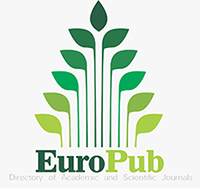From a Cocoon to a Butterfly: The Experience of Nursing Students in Writing Nursing Care Plan
From a Cocoon to a Butterfly
DOI:
https://doi.org/10.5281/zenodo.10019849Keywords:
Nursing care plan, Nursing process, Qualitative research, Nursing Students, AssignmentAbstract
Aim: Despite the crucial role of nursing care plans as written assignments in improving the quality of care delivered by nursing students, there is limited understanding of this phenomenon. So, this study aims to explore the nursing students' experience in writing nursing care plans through qualitative research in Turkey.
Materials and Methods: We undertook a phenomenological study with a content analysis approach in 2023. The selection of participants was based on non-probability and purposeful sampling. We employed semi-structured interviews to collect the data. The study involved students in their fourth year of the Bachelor of Science in nursing program who had written the nursing care plan before and desire to participate in the study. The MAXDA10 program was used to analyze the data.
Results: The student's average age was 22.55 ± 0.96 years, with 77% of them being female, and 59% of them choosing the profession willingly. We identified one main theme: From a Cocoon to a Butterfly (transformative journey of nursing students as they progress from novices to skilled care planners). Also, the study identified three primary subthemes: "From a hard nut to crack to a piece of cake" and "From beginner to a pro" as well as a set of “Recommendations” for writing nursing care plans.
Conclusion: In conclusion, our findings reveal that nursing students undergo a transformative process akin to a caterpillar in their care planning writing. Initially, this phase may seem daunting and time-consuming, potentially discouraging. However, as individuals progress, they grow and ultimately find fulfilment and professional satisfaction. The recommendations provided by the students offer valuable guidance for nursing educators and institutions.
Downloads
References
Salvador JT et al. Development of student survey on writing nursing care plan: An exploratory sequential mixed‐methods study. J. Nurs. Manag 2022; 30(5): 23-36.
Ironside PM, McNelis AM, and Ebright P. Clinical education in nursing: Rethinking learning in practice settings. Nurs. Outlook 2014;62(3): 185-191.
Lock K. Reflections on designing and implementing a nursing care plan. Vet. Nurs. J 2011;2(5): 272-277.
McCash K. Applying critical thinking to the nursing process. In Medical-Surgical Nursing: Clinical Problems, Fifth, 2000: 77-84.
O'connell B. The clinical application of the nursing process in selected acute care settings: a professional mirage. Aust. J. Adv. Nurs 1998;15(4):22-32.
O’connell B et al. Documenting and communicating patient care: Are nursing care plans redundant? Int. J. Nurs. Pract 2000;6(5):276-280.
Lee TT. Nursing diagnoses: factors affecting their use in charting standardized care plans. J. Clin. Nurs 2005;14(5): 640-647.
Marchigiano G, Eduljee N, and Harvey K. Developing critical thinking skills from clinical assignments: A pilot study on nursing students’ self‐reported perceptions. J. Nurs. Manag 2011; 19(1):143-152.
Kurt Y, Özkan ÇG, and Öztürk H. Comparison of the effects of face-to-face and electronic peer mentoring on students' care plan preparation and motivation levels. Nurse Educ. Today 2022; 116: 105455.
Mason C. Guide to practice orload of rubbish'? The influence of care plans on nursing practice in five clinical areas in Northern Ireland. J. Adv. Nurs 1999; 29(2): 380-387.
Babadağ K, Kaya N, and Esen F. Öğrencilerin NANDA hemşirelik tanılarını belirleme durumlarının saptanması. Hemşirelik Forumu 2004;7(3):37-41.
Bayar K, Çadır G, and Bayar B. Hemşirelik öğrencilerinin klinik uygulamaya yönelik düşünce ve kaygı düzeylerinin belirlenmesi. TAF Prev Med Bull 2009; 8(1):37-42.
Sharif F, and Masoumi S. A qualitative study of nursing student experiences of clinical practice. BMC Nurs 2005;4(1): 1-7.
Ünsar S, Erol Ö, and Turan N. Meslek Esasları dersi alan hemşirelik ve ebelik 1. sınıf öğrencilerinin durumluk-sürekli kaygı düzeylerinin belirlenmesi. Hemşirelik Forumu Dergisi 2006; 94:p.99.
Goto Y et al. Evaluation of an advance care planning training program for practice professionals in Japan incorporating shared decision making skills training: a prospective study of a curricular intervention. BMC Palliat. Care 2022;21(1): 1-15.
Guner P, and Terakye G. Hemsirelik yüksekokulu son sınıf öğrencilerinin hemşirelik tanılarını belirleyebilme düzeyleri. Cumhuriyet Üniversitesi Hemşirelik Yüksekokulu Dergisi 2000; 4(1): 9-15.
Fadime G, and Nevin K. Öğrencilerin bakim planlarinda hemşirelik süreci ve NANDA tanilarini kullanma durumları. EGEHFD 2006; 22(1): 69-80.
Kaya N, Kaya H, and Babadağ K, Öğrencilerin hemşirelik süreci formlarının planlama aşamasının incelenmesi. İstanbul Üniversitesi FN Hem. Derg 2004; 13(52): 79-90.
Tutuk A, Al D, and Doğan S. Hemşirelik öğrencilerinin iletişim becerisi ve empati düzeylerinin belirlenmesi. CÜ Hemşirelik Yüksek Okulu Dergisi 2002;6(2):36-41.
Kyngäs H. Qualitative research and content analysis, in The application of content analysis in nursing science research. 2020, Springer. 3-11.
Speziale HS, Streubert HJ, and Carpenter DR. Qualitative research in nursing: Advancing the humanistic imperative. 2011: Lippincott Williams & Wilkins.
Tong A, Sainsbury P, and Craig J. Consolidated criteria for reporting qualitative research (COREQ): a 32-item checklist for interviews and focus groups. IJQHC 2007;19(6): 349-357.
Newell R, and Burnard P. Research for evidence-based practice in healthcare. 2010: John Wiley & Sons.
Hsieh HF, and Shannon SE. Three approaches to qualitative content analysis. Qual. Health Res 2005;15(9):1277-1288.
Amankwaa L. Creating protocols for trustworthiness in qualitative research. J. Cult. Divers 2016; 23(3):121-127.
Connelly LM. Trustworthiness in qualitative research. Medsurg Nurs 2016. 25(6): p. 435.
Lotfi M, et al. Nursing process from theory to practice: Evidence from the implementation of" Coming back to existence caring model" in burn wards. Nurs. Open 2021; 8(5): p. 2794-2800.
Yildiz AT, and Ceyhan Ö. Hemşirelik öğrencilerinin NANDA I hemşirelik tanılarına yönelik tutumlarının belirlenmesi. Yaşam Boyu Hemşirelik Dergisi 2023; 4(2):36-51.
Pozam M, and Zaybak A. Hemşirelik öğrencilerinin klinik performanslarına ilişkin öz-yeterliklerinin incelenmesi. DEUHFED 2022; 15(1): 22-29.
Üçkardeş N. Bezmialem Vakıf Üniversitesi Sağlık Bilimleri Fakültesi Hemşirelik Bölümü öğrencilerinin (1, 2, 3, 4) hemşirelik sürecini bilme durumları. Bezm-i Alem Vakıf Üniversitesi, Sağlık Bilimleri Enstitüsü, Hemşirelik Ana Bilim Dalı, Yayınlanmamış Yüksek Lisans Tezi, 2022. İstanbul.
Amouzeshi Z, Mohsenizadeh M, and Amouzeshi A. Effect of teaching nursing process using integrated method (Concept map and advance organizer) on nursing students’ clinical learning. FMEJ 2015; 5(1): 68-71.
Yılmaz AA, et al. Hemşirelik öğrencilerinin hemşirelik sürecinin veri toplama aşamasina ilişkin görüşleri ve yaşadıkları güçlükler. Anadolu Hemşirelik ve Sağlık Bilimleri Dergisi 2019; 22(4): 231-238.
Burucu R, and Arslan S. Nursing students’ views and suggestions about case-based learning integrated into the nursing process: a qualitative study. Florence Nightingale J Nurs 2021. 29(3): p. 371.
Downloads
Published
How to Cite
Issue
Section
License
Copyright (c) 2023 Chronicles of Precision Medical Researchers

This work is licensed under a Creative Commons Attribution-NonCommercial-ShareAlike 4.0 International License.





